Bucharest, Romania.
Imagine a city that tells a story without saying a word, a city that lets its structures narrate a history fraught with ambition, upheaval, violent oppression, and reclamation.
Imagine a city standing ponderously on a somewhat dusty crossroads of the past, the present, and the near future.
Do so, and you will be imagining Bucharest.
To outsiders such as ourselves Bucharest is a city that tickles the imagination, that flirts with its visitors by offering an enticing prospect all curious travelers savor. The prospect of exploring an urban landscape filled with captivating texture and contrast. The prospect of turning a corner on a random street and stepping right into the past.
Underneath every crumbling facade, behind every chained and bolted door, in every narrow alley, in every hidden garden, on any boulevard the architecture in Bucharest waits to tell a new tale, a story steeped in history.
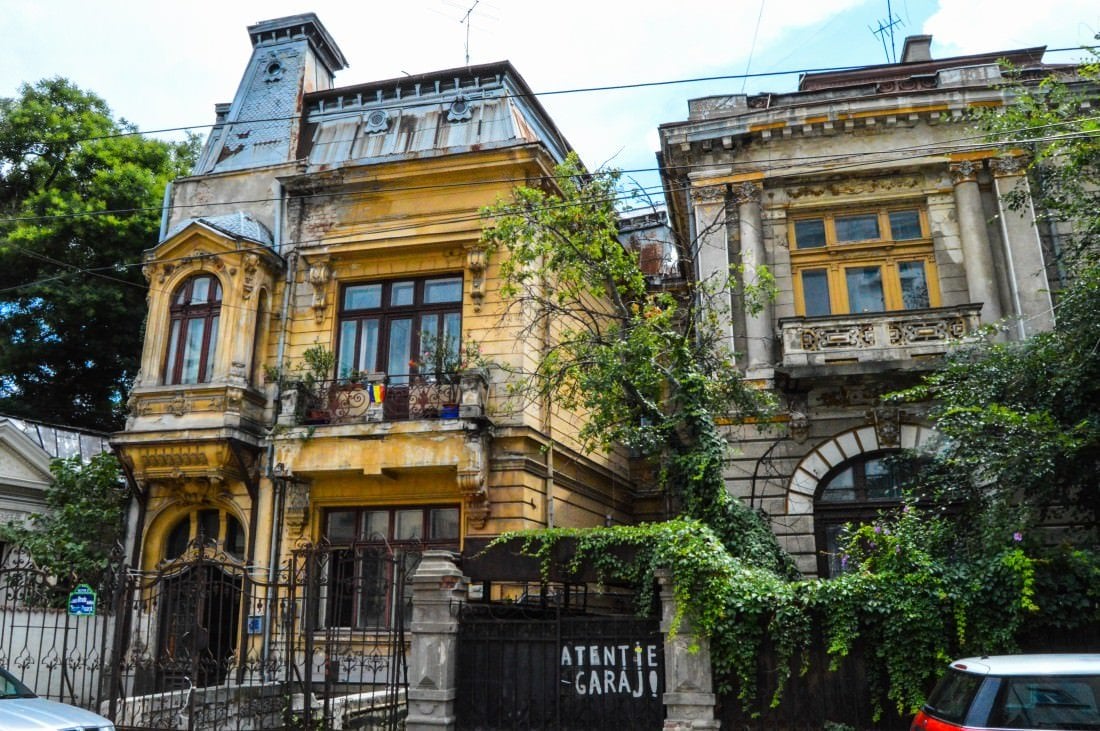
On one narrow street an urban wanderer might find classic 19th-century architecture crumbling with the weight of age and ivy, reclaimed by the verdant embrace of mother nature.
On the next street stand Art Deco masterworks, side by side with French Renaissance extravagance, surrounded by oppressive communist concrete, nestled between modern sprouts of glass and steel.
A riotous amalgamation, made all the more fascinating by its seemingly chaotic nature.
Calling the architecture of Bucharest eclectic or even schizophrenic, however, does not do this fascinating city the justice it deserves.
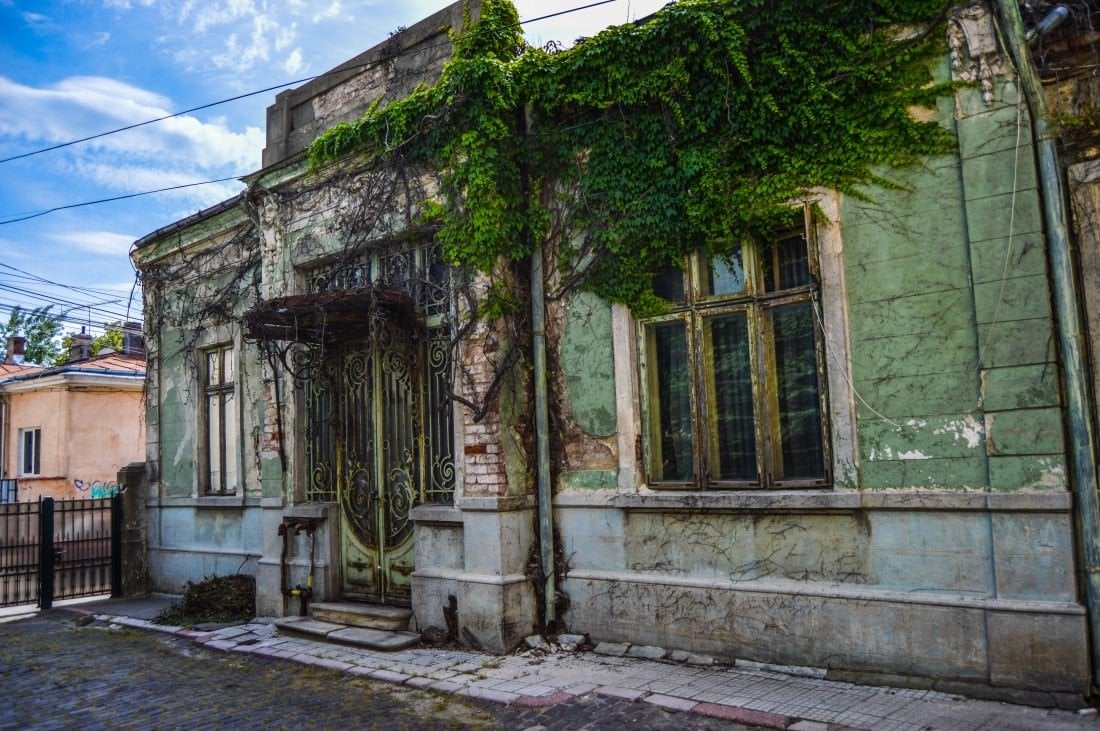
Table of Contents
A (Very) Brief History Lesson
Bucharest was named the capital of Romania in 1862 and within the next fifty or so years was given the nickname “Little Paris” for its abundance of Parisian architecture. Many upper-class Romanians sent their children to study in Paris, and those students brought back with them a love for French architecture.
In the late 1920s, inspired by the creativity of architect, painter, and native son Marcel Janco (among others), Bucharest took to building with a fervor and passion, placing itself on the forefront of the modernist architectural movement.
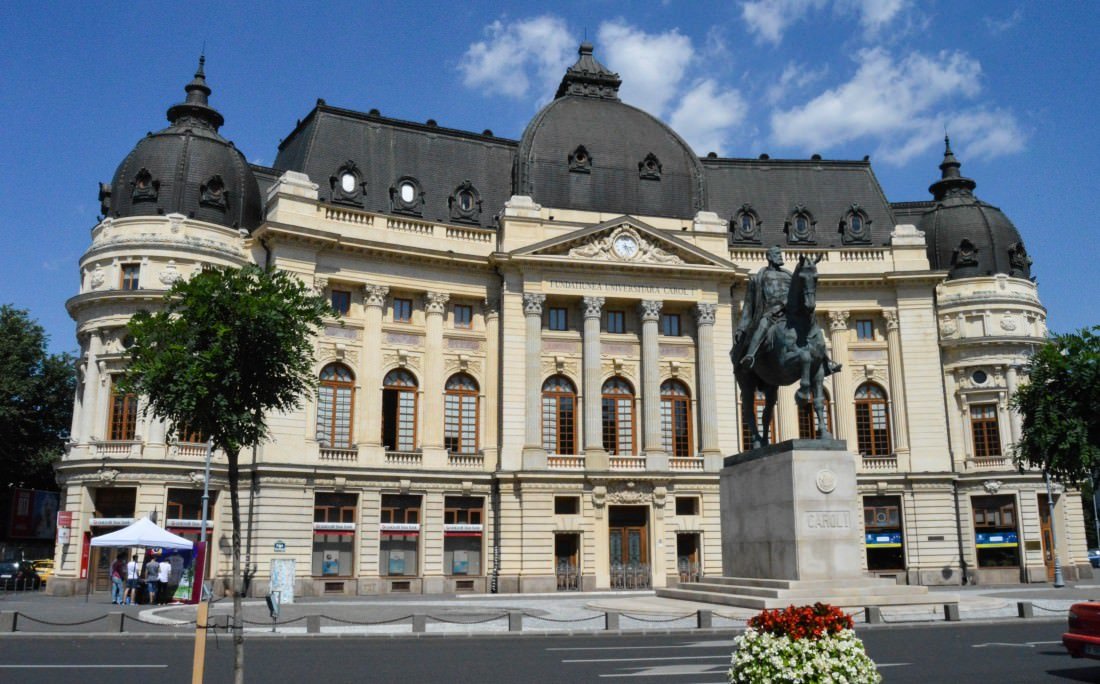
Sadly, starting in 1965 Communist dictator and all-around scumbag Nicolae Ceausescu destroyed large swaths of existing structures around the city to make room for government buildings, including the ridiculously massive Palace of the Parliament.
Bucharest’s center was particularly affected, and by the time he was done the dictator had razed and demolished countless architectural masterpieces. Most of what remained of Bucharest’s medieval architecture was torn down; thus only a few examples are left standing in the city currently.
Much of what Ceausescu did not destroy he attempted to hide, either by constructing new facades or simply by surrounding existing buildings with grey, drab, semi-functional structures that were meant to be utilitarian, but which also served to instill conformity and suppress the imagination.
Ceausescu took the term “Iron curtain” to heart, and quite literally built up a “Concrete Curtain” of his own.
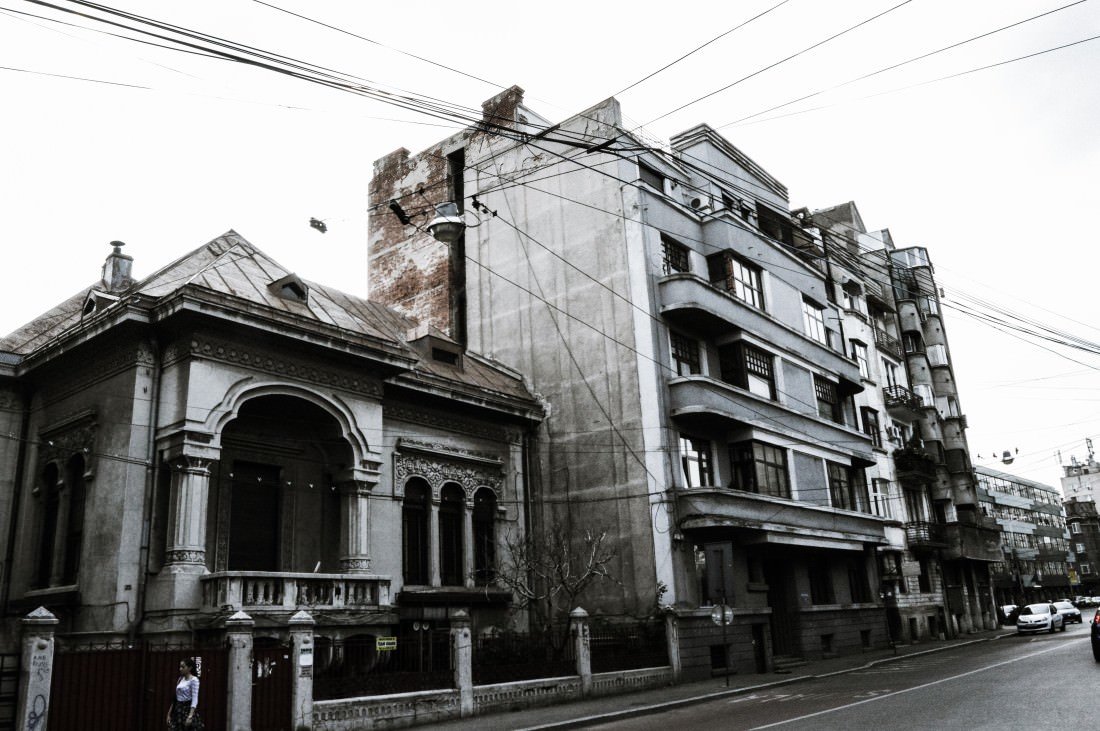
These were not the worst of Ceausescu’s crimes, of course. He was arguably the bloodiest and most heavy-handed dictator of the Soviet Bloc. His secret police, the Securitate, tortured, imprisoned,and killed tens of thousands of people around the country.
A despicable man with an equally horrible wife, Ceausescu’s actions reshaped not only the psyche of the Romanian people trapped in his oppressive regime, but also the fundamental aesthetics of Bucharest.
Natural disasters have played their role in the destruction of historic architecture as well. Over the last century Bucharest has been traumatized by three earthquakes, the worst of which occurred in 1977. Measuring 7.3 on the Richter Scale, the monstrous seismic shockwave killed over fifteen hundred people in the city, and devastated hundreds of buildings, including over thirty large communist residential “blocks”.
The ruling party took advantage of the damage to pull down even more classic architecture, replacing it, yet again, with drab utilitarian eyesores.
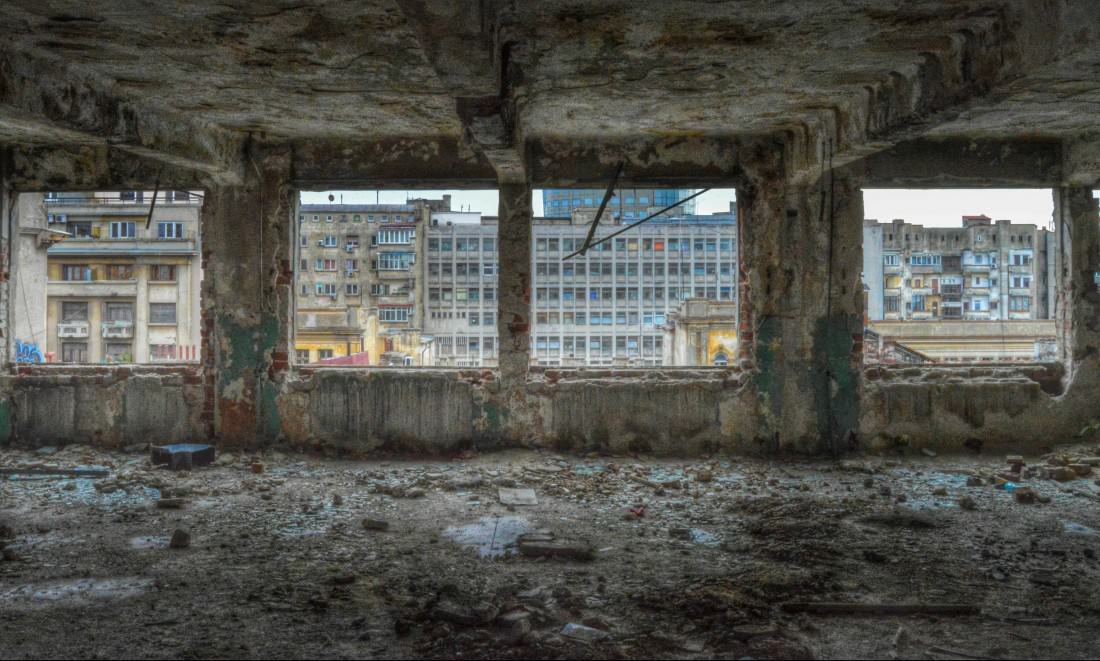
In the twenty six years since the sudden and bloody fall of communism in Romania (many buildings near the center of the city are pock-marked with bullet holes left over from the Revolution), Bucharest has been undergoing a steady process of modernization. Some buildings from the communist era have been given face-lifts, while others have been gutted and modified for new purposes.
Along with the rise of capitalism in the country so too have modern steel and glass office buildings sprouted, higher into the skyline than had typically been built in the city before.
This mix of the present and the past might be best encapsulated by the Headquarters of the Union of Romanian Architects, a fascinating structure that combines smooth glass and sharp angles with a pre-existing classic facade. By merging old with new the Headquarters captures a key component of Bucharest’s charm.

The Beauty, and Annoyance, of Urban Decay
One of the first things you might notice when walking around the center of the city, and slowly making your way beyond the borders of the old town, is the decay. Slow yet inevitable atrophy is present nearly everywhere you look, in cracked facades, rusted doors, and crumbling walls.
Buildings textured with delightful classical designs stand seemingly empty, random windows knocked out, darkness behind the missing panes. Nature’s green touch resides in every crack of broken concrete, on every ivy adorned wall. It’s as if the Earth itself decided to engulf Bucharest in a verdant hug.
Now imagine hundreds of such buildings, all within a few square kilometers of one another.
This sort of post-apocalyptic aesthetic adds an enormous amount of uniqueness and charm to parts of Bucharest, lending it the weighty air of a city deeply steeped in history.
Of course many long time residents of the city aren’t as enamored with the urban decay as we were. What is quaint and new to us is an everyday chore to many of the good people of Bucharest.
We had numerous conversations with locals, where upon expressing our fascination with the crumbling architecture we got weirded-out looks, and even some eye rolling. Fair enough, we get it. We’re dumb tourists, fawning over something that is a pain in the ass to long time residents. We sort of feel bad about that, but our fascination with what we found in undeniable.
So while we shouldn’t praise the corrupt government for failing to restore much of this city, we can at least appreciate the fact that it looks really freaking cool, right?

Anyway, a visitor might wonder at the entropy. Why are all these beautiful buildings falling apart? Why is this architecture, which truly deserves to be marveled at, sitting here and disintegrating into pieces?
The answer is multi-faceted, of course. While under Communist rule all residential real estate was nationalized, which means it was taken and “redistributed” among the people (imagine signing over the deed to you house while someone is holding a gun to your head and you get the picture).
Thousands of home owners lost their buildings seemingly overnight. Some structures were demolished to make room for grandiose government buildings, some were requisitioned and used as hubs for the secret police, while others were partitioned and turned into multi-family dwellings. A one family house suddenly became home to dozens of people.
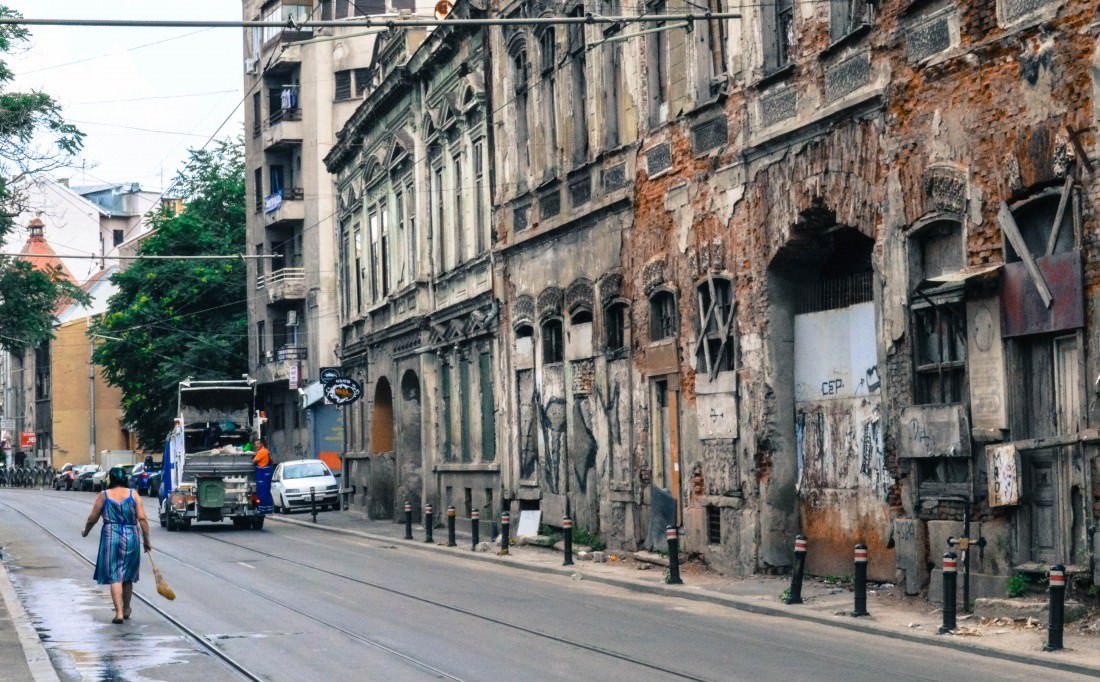
Once Communism had run its course in Romania many home-owners, or in most cases their heirs, attempted to reclaim their property. Those who succeeded would, more often than not, find their homes in a predictable state of ruinous disrepair from seventy years of neglect, overuse, and dilapidation. Lacking the funds to renovate, and with land prices rising, many home owners are simply waiting for their buildings to be condemned so that they might be torn down.
Why engage in costly renovations when the plot of land your home sits on is worth far more than the building itself?
And so, the entropy continues for many historic buildings in Bucharest. One day, the city might be filled with new structures taking the place of the worn-down classic buildings. Some of these structures will likely be soulless condominiums, supermarkets, malls, cell phone stores, office buildings, and all the other ornaments and trappings that come with modern capitalist life. Bucharest will step fully out of its storied past and plant both feet firmly in the present.
So, if you want to go see history tell its tale on every street, go now. One day it might all be but a memory.
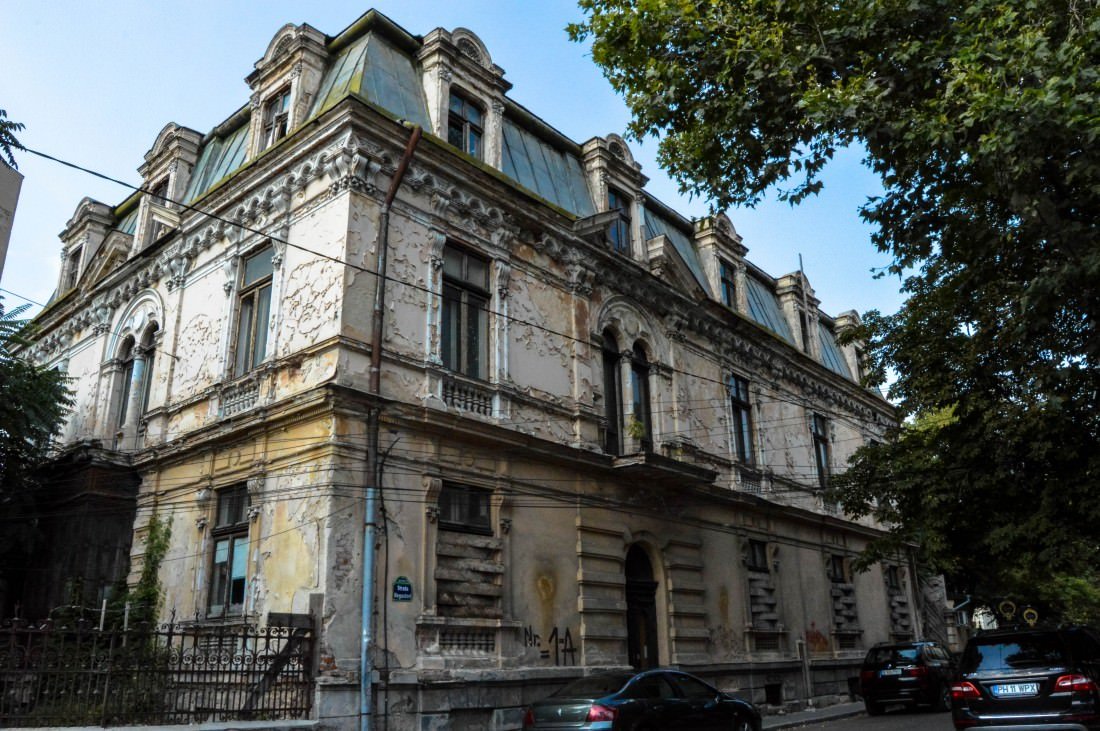
Beautiful Decay Tour with the Interesting Times Bureau
One of the first tours we took in Bucharest was with the knowledgeable folks at the Interesting Times Bureau. We had spent a week in the city by that point and were incredibly fascinated by the architecture, so when we saw a tour entitled “Beautiful Decay” we knew we had to partake.
We highly recommend that anyone with even the slightest interest in history or architecture takes this tour when visiting Bucharest. Our guide, George, led us to many interesting locations in and around the center of Bucharest and painted a detailed picture of how the past was reflected in the present. We saw and learned much in the four hours we spent with him, and the experience fueled our desire to write this article.
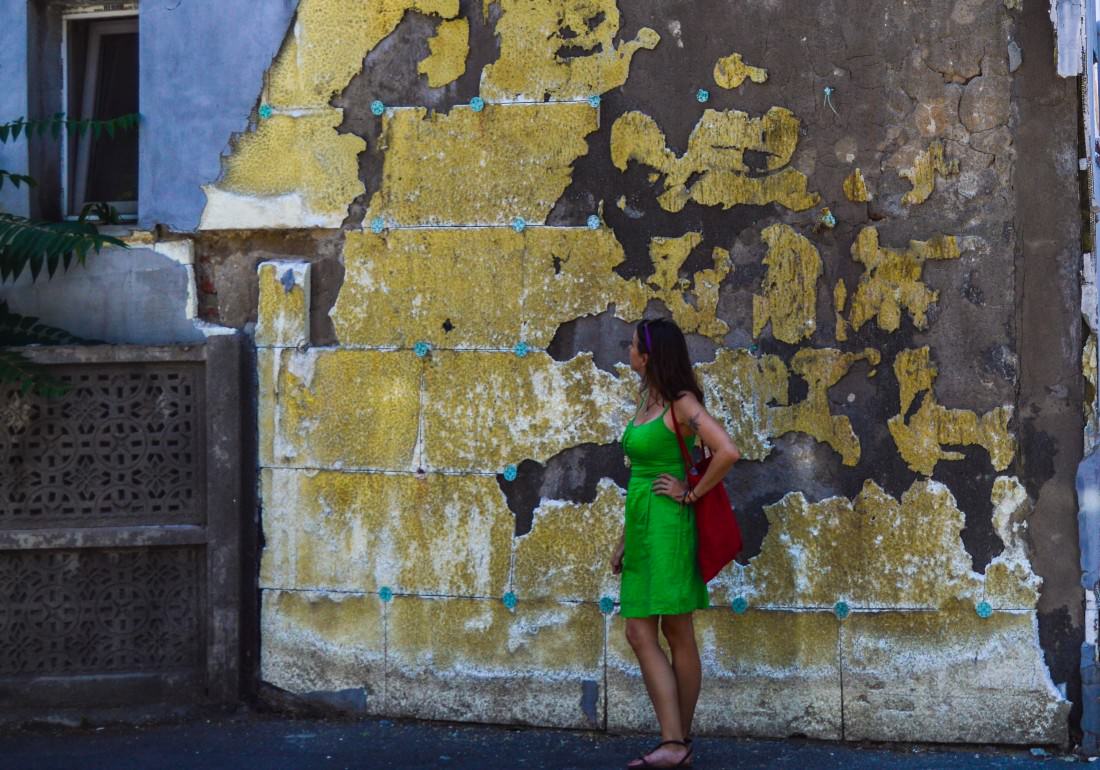




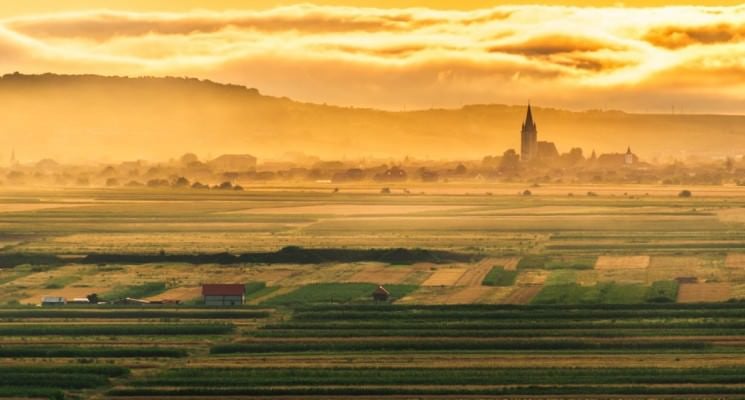
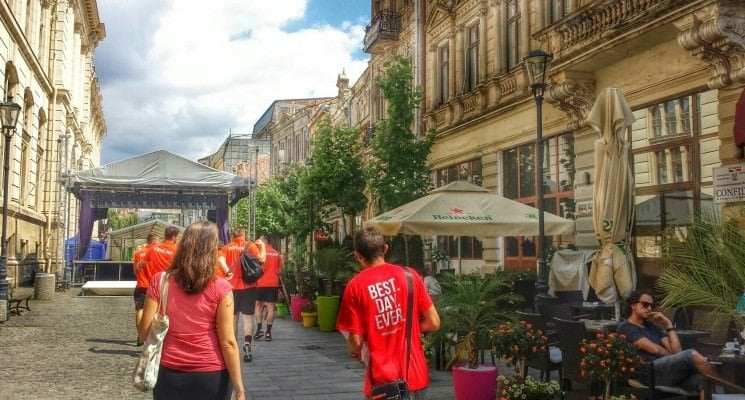
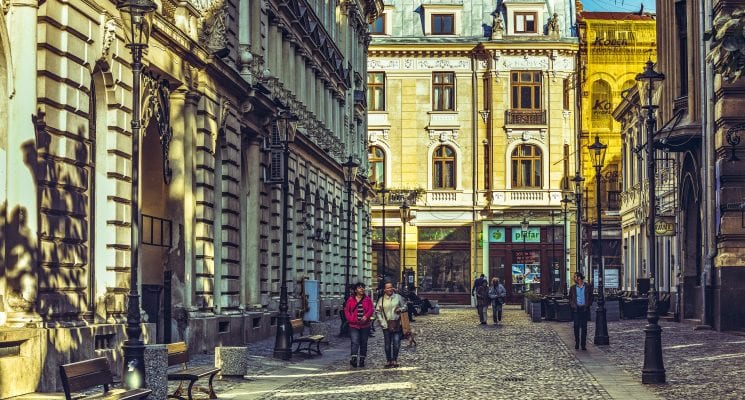
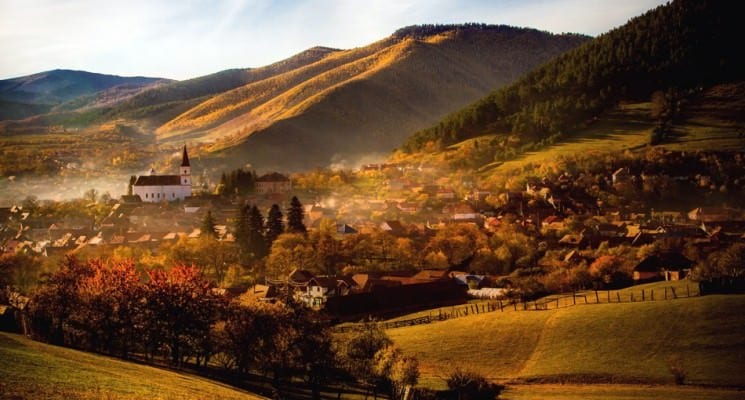
Bravo, nice article. You captured the texture of bucharest very well.
Thank you John!
This is a beautifully written article that perfectly captures the sense of being in this crumbling city and digs deep into the reasons behind the current state of decay. Thanks for a very interesting read!
Thank you for your kind words. Have to admit we were a bit worried people might take this article the wrong way, but that seems to have been (mostly) a non issue.
Looks like a very interesting city.
It really is! Totally recommend going.
Very good article – eloquent, evocative and poetic at the same time. Thank You 🙂
Thank you for the kind words =)
This kinds if reminds me of why I like old barns. There’s a lot of beauty, and you can feel the history–as if the building were a living thing, but some sadness at its passing too.
Linda Weiss Tell your son to go to Cappadocia, Turkey! A MUST!!!
Like · Reply · 4 mins
Heading to Bucharest soon. Thanks for the photographic inspiration.
Cheers,
Michael
Our Pleasure Michael. Let us know your thoughts after you have visited! =)
I liked the houses on the 2nd photo, I would like to stay there for some time 🙂
That’s what we thought every time we walked by it Julius!
This post is like a breath of fresh air! Wonderfully written and informative (something that is surprisingly hard to find these days despite the proliferation of travel blogs on the Internet). I visited Romania for three weeks a few years back and never made it to Bucharest. From everything I read, it seemed that most people generally suggested avoiding the city.
I love old crumbling architectural gems though and, after reading your post, think I’d have loved it!
Thanks for writing,
Erika
Erika,
Thank you for the nice words. It took me almost a week of research to write this article, hours upon hours of walking around taking photos, and many more hours just thinking about how to best describe what i loved about the city while doing it the justice it deserved. I didn’t want this piece to be about “urban decay porn”. I want to try and explain WHY things are they way they are in Bucharest, while at the same time expressing my admiration for the beauty i saw there.
You would have loved Bucharest, i think. Checking out your site now =)
Cheers!
How could you not sign up for tour called Beautiful Decay? Love the photos!
Fascinating. I love exploring Europe’s areas of urban decay, because there is always so much history behind the destruction. Bucharest’s Beautiful Decay tour definitely sounds like something for me.
Bucharest is a city full of interesting details for the curious eye. Good article. Alina from Bucharest:)
I have been to Bucharest and Romania several times – love both. I like your article, Michael, but as a travel journalist myself I have two things to critisize:
1. You never mention how many citizens Bucharest has. The number of citizens gives the reader a picture of the size of the city as to compare with cities you know.
2. You don’t mention the joining of Romania in the EU in 2007. This step was a significant boost to Romania’s economy and the evolution of (mainly) Bucharest. EU funds paid for the enormous transformation of the city (among many other things).
Still a good article 🙂
Anders, thank you for the feedback! I agree with both your points!
Born and raised in Bucharest, I thank you from the bottom of my heart for writing this article. Most literature available doesn’t bring out the incredible beauty of Bucharest’s soul, which you really went for. Also, history is crucial for understanding it and really looking where it matters – and you did a great job including it. Again, you did a lot of justice to a city and people that is little known and often misunderstood – thank you!
Llyane, you are most welcome. We had the pleasure of meeting really cool local people while in Bucharest who patiently answered all of our questions about the city. Having learned so much I felt like i wanted to encapsulate my feelings about the city, and briefly explain why things are the way they are.
We loved Bucharest and Romania, and will be back!
We visited Bucharest last fall and were pleasantly surprised–we were expecting a grim post-Soviet city devoid of charm. While there is certainly the decay you described, there is a core of beauty and a vibrancy that is slowly reasserting itself. We loved it!
We also took a tour with Interesting Times Bureau–ours was about the history of Communism in the city–they do a great job of showing unique aspects of Bucharest, and the guides are extremely knowledgeable!
Michael, congratulations for your article – it is objectively written.
Bucharest population is almost 2 000 000 persons (meaning 9% from Romanian population).
And an observation for Anders Nielsen: the transformation of architecture in many areas of Bucharest is due to private investments made in the last 20 years by various corporations active here, not EU funds. Sadly, drawing in those funds is incredibly poor.
Ioana (from Bucharest)
Both Bucharest and San Antonio TX have the same population; there are some similarities in appearances of each city; there are the new, ultramodern buildings in the downtown area of San Antonio and in some of the suburbs, and there are also rundown, decaying buildings here like those shown in Bucharest; so much of this is due to lack of time and lack of funds. Interestingly enough, and somewhat unrelated, Prince Vlad Tepes (Dracula) was the founder of the city of Bucharest, according to a document produced in 1459; it was here in San Antonio, although Austin can be included, that the record for Prince Vlad Tepes was set straight and his case was successfully defended. — Cheryl B. Montoya, San Antonio TX
A true embodiment of wabi-sabi… Romania is hidden and mysterious, beautifully dark, almost a mystical place…